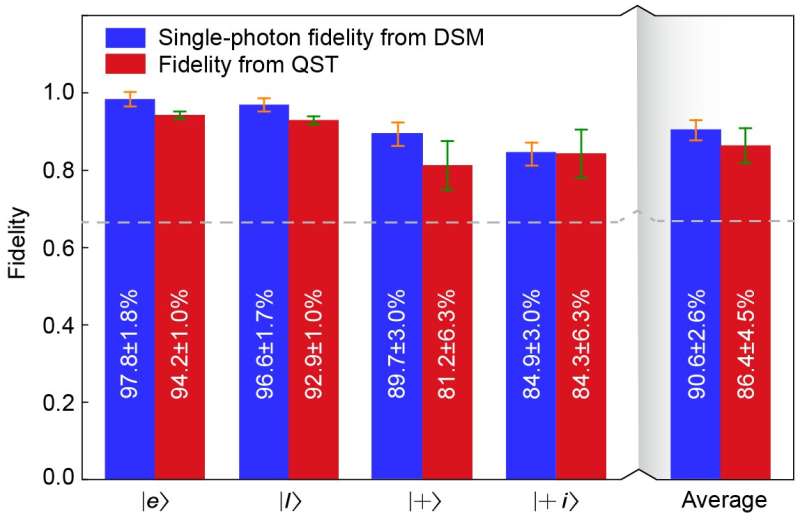Quantum teleportation allows quantum information to be transferred to a remote location by using quantum entanglement and classical communication. It has been achieved with varying rates of independent photons of quantum light, from tabletop experiments to real-world demonstrations.
Using a low-Earth orbit Micius satellite, researchers have now achieved quantum teleportation over 1200 km. To date there has been no quantum teleportation system whose rate can reach the order of hertz, which hinders future applications of quantum internet.
In a paper published in Light: Science & Applications, a team of scientists led by Prof. Guangcan Guo and Prof. Qiang Zhou from the University of Electronic Science and Technology of China (UESTC), cooperating with Prof. Lixing You from the Shanghai Institute of Microsystem and Information Technology of the Chinese Academy of Sciences, has improved the teleportation rate to 7.1 qubits per second for the first time based on the “No. 1 Metropolitan Quantum Internet of UESTC.”
This presents a new record for a quantum teleportation system over a metropolitan range.
“Demonstrating high-speed quantum teleportation outside of a laboratory involves a whole set of challenges. This experiment shows how these challenges can be overcome, and hence it establishes an important milestone towards the future quantum internet,” said Prof. Qiang Zhou, who is the corresponding author of this work.
The main experimental challenge in a real-world quantum teleportation system is performing the Bell state measurement (BSM). In order to ensure the successful quantum teleportation and improve the efficiency of BSM, Alice’s and Bob’s photons need to be indistinguishable at Charlie’s location after long-distance transmission via fiber. The team developed a fully running feedback system, which realized the fast stabilization of the path length difference and polarization of the photons.

At the same time, the team used a single piece of fiber-pigtailed periodically poled lithium niobate waveguide to generate the entangled photon pairs. Based on this, a high-quality quantum entangled light source with a 500 MHz repetition rate was developed for the teleportation system.
Such a high-speed quantum teleportation based on quantum optics requires the most sensitive photon sensors in order to collect as many events as possible. The team led by Prof. Lixing You, along with colleagues of Photon Technology Co., LTD, provided high-performance superconducting nanowire single-photon detectors for the experiment. Benefiting from the detectors with excellent efficiency and almost no noise, high-efficiency BSM and quantum state analysis were achieved.
The team employed both quantum state tomography and decoy state method to calculate the teleportation fidelities, which were well above the classical limit (66.7%), confirming that high-speed metropolitan quantum teleportation has now been achieved.
The “No. 1 Metropolitan Quantum Internet of UESTC” is expected to develop a “high-speed, high-fidelity, multi-user, long-distance” quantum internet infrastructure in the future by combining integrated quantum light sources, quantum repeaters, and quantum information nodes. The team also forecasts that this infrastructure will further promote the practical application of quantum internet.
More information:
Si Shen et al, Hertz-rate metropolitan quantum teleportation, Light: Science & Applications (2023). DOI: 10.1038/s41377-023-01158-7
Citation:
Team boosts metropolitan quantum teleportation to hertz rate (2023, July 24)
retrieved 25 July 2023
from
This document is subject to copyright. Apart from any fair dealing for the purpose of private study or research, no
part may be reproduced without the written permission. The content is provided for information purposes only.

